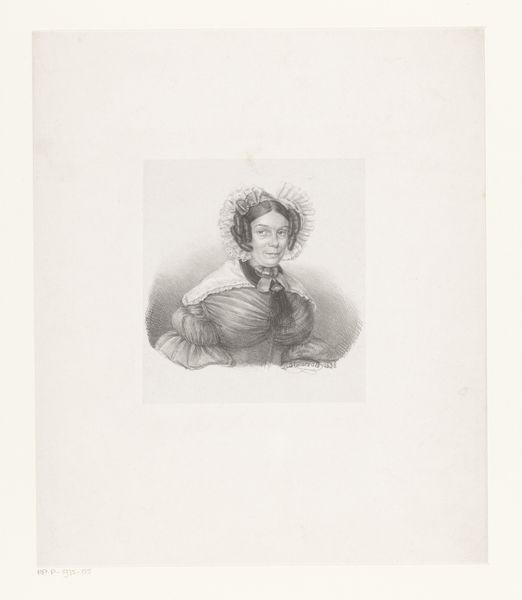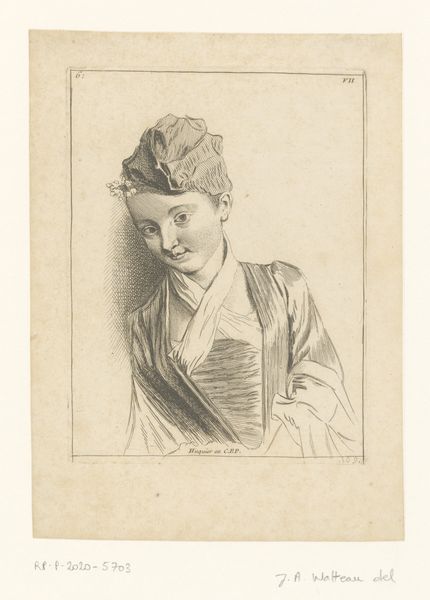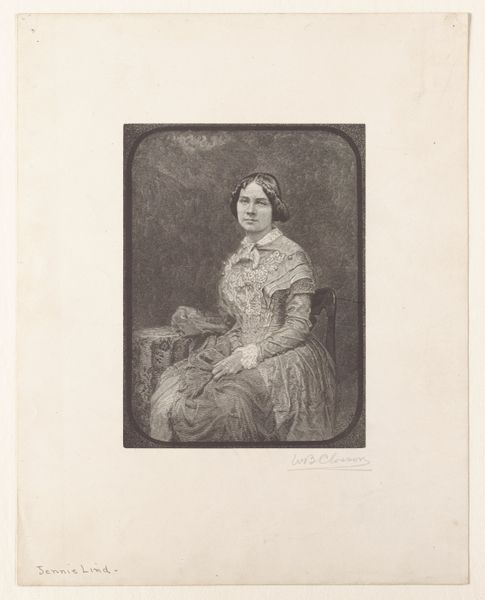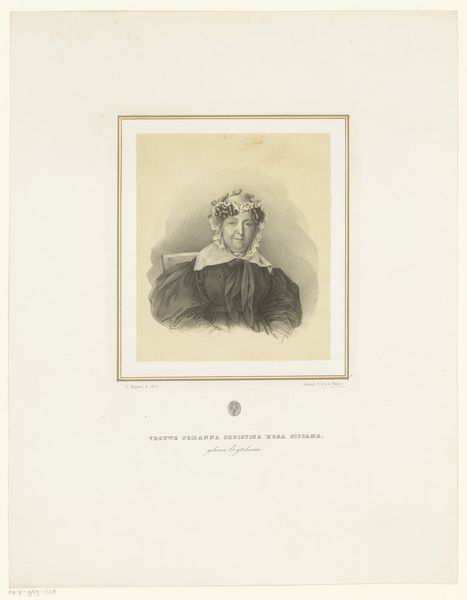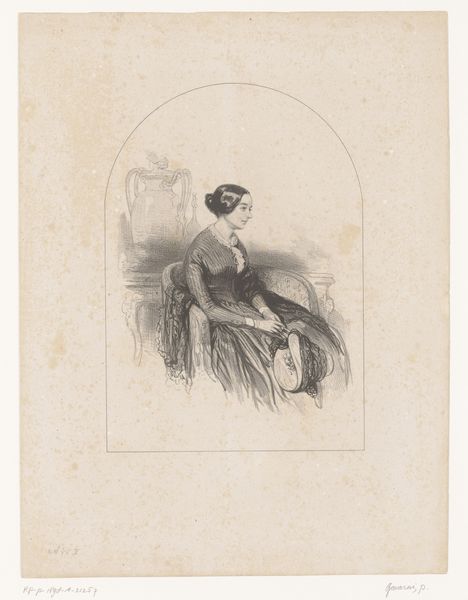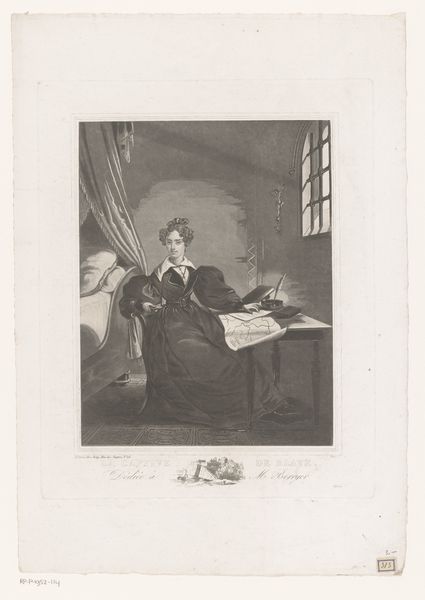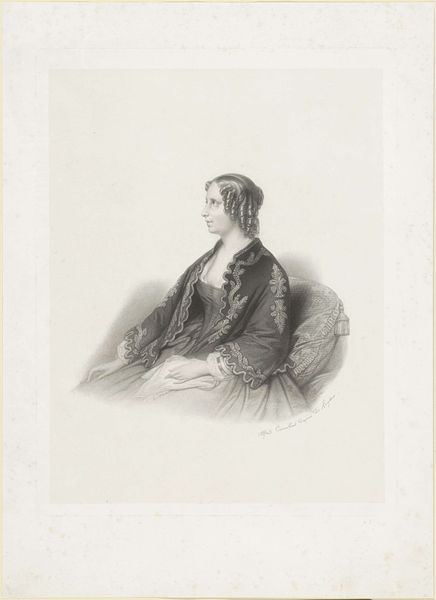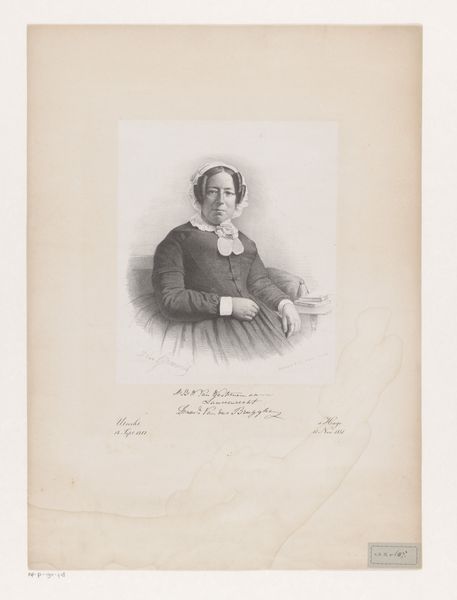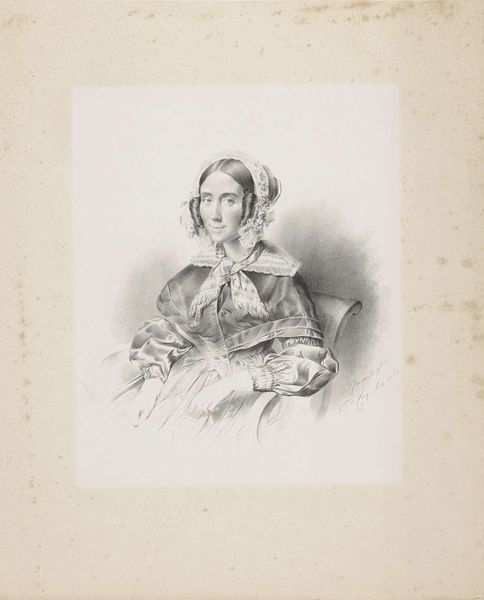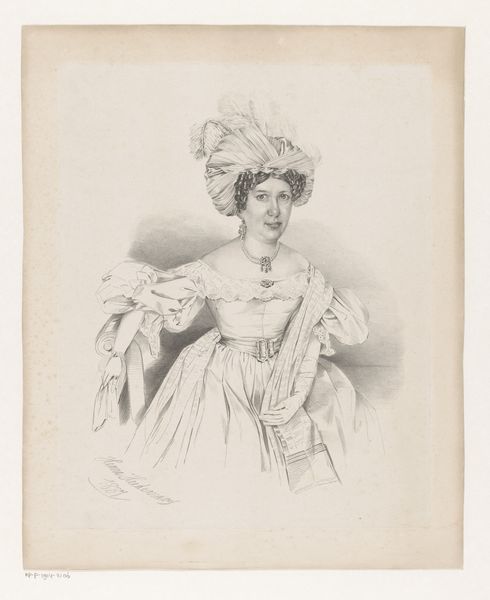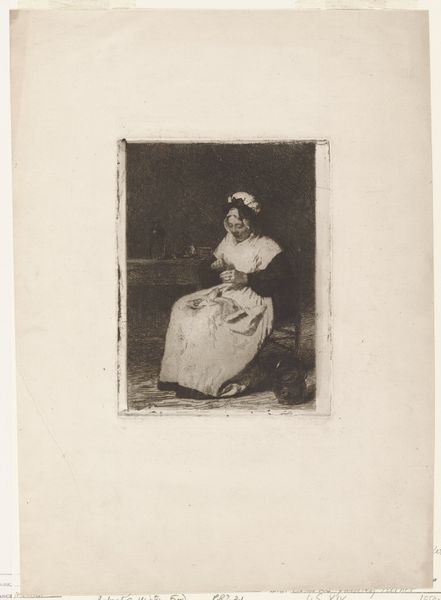
Portret van een onbekende vrouw, mogelijk mevrouw Smissaert c. 1851 - 1883
0:00
0:00
Dimensions: height 545 mm, width 365 mm
Copyright: Rijks Museum: Open Domain
Curator: Let's consider this piece titled, "Portret van een onbekende vrouw, mogelijk mevrouw Smissaert," by Johan Hendrik Hoffmeister, made between 1851 and 1883 using pencil. It immediately strikes me as reserved. Editor: Indeed. The tight, precise lines of the pencil create a feeling of constraint, almost as if the sitter is corseted not just physically but also socially. Her gaze is lowered, and her form is self-contained. Who was she? Curator: That's a vital question! Given its creation during a period of growing literacy and evolving roles for women, the very act of depicting a woman with a book demands inquiry. Is it about the intellectual possibilities of women at the time, or is the portrait itself merely reflecting prevailing patriarchal attitudes of a woman contained and literate? Editor: I'm compelled by the subject’s apparent passivity. The drawing speaks to broader power structures where women, particularly in domestic settings, were often confined to roles dictated by social expectations. Her book—does it grant her power, or simply reinforce domestic ideals through devotional reading? Curator: Absolutely. I feel the importance of asking such questions from intersectional viewpoints, investigating potential implications for the subject. Editor: Further historical context is necessary: what societal conventions dictated the commissioning and creation of such a portrait, who paid for it and what was it used for. The very accessibility of this artform plays into ideas around gender, class and status at the time, so while on first glance this could be read as merely "a portrait," looking beneath reveals political, societal and cultural messaging and potential inequalities. Curator: Looking deeper into the period reveals social anxieties regarding female literacy and access to knowledge, how it potentially challenged patriarchal authority. Her presence with a book—what message does that send to other women who see this picture? It encourages engagement with broader theories of representation and identity formation. Editor: By examining this image within the social and institutional constructs of its time, we gain invaluable insight into its intended purpose and, perhaps even more compellingly, into aspects that are still of importance to discussions and dialogues in present day. Curator: In short, beyond technique and appearance, this work acts as an important reminder of progress made and the continued, urgent necessity for social reform, from intersectional feminist standpoints and beyond. Editor: Indeed, a valuable visual historical document showing one woman, whose identity remains in many ways, intriguingly enigmatic.
Comments
No comments
Be the first to comment and join the conversation on the ultimate creative platform.
